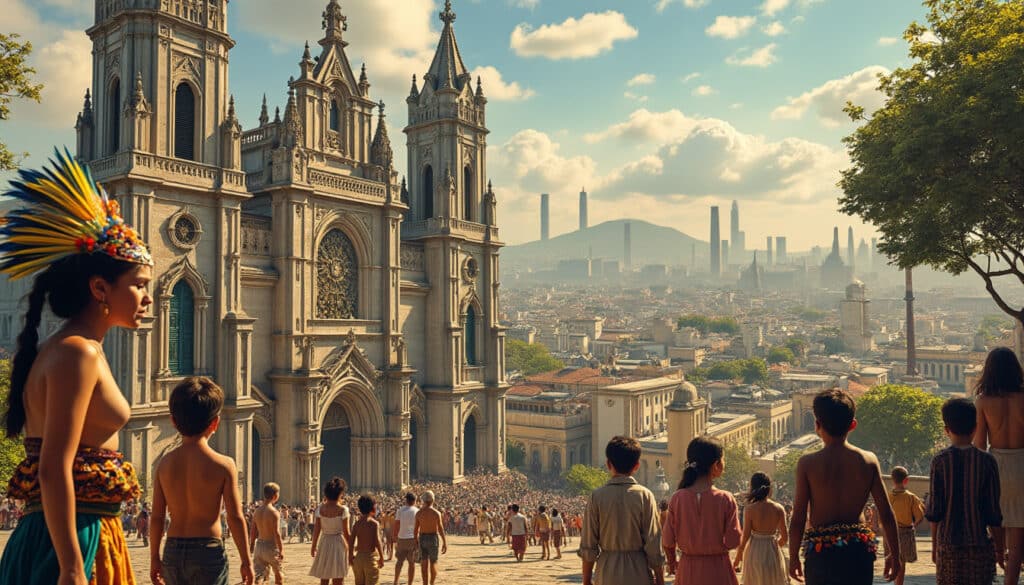Embracing a mix of tradition and modernity, São Paulo, Brazil’s bustling metropolis, stands as a vibrant canvas for unexpected stories and complex social dynamics. While it’s famed for its economic significance and cultural pulse, São Paulo is also a city teeming with contrasts that are often overlooked. This exploration delves into some unusual facets of São Paulo’s identity and the social issues that underscore its evolving landscape. From the hidden allure of its favelas to the relentless rhythm of its economic machinery, São Paulo unfolds as a city of paradoxes. 🏙️
Unveiling São Paulo’s Intriguing Facts
São Paulo is not just any urban center; it is Brazil’s megacity that encapsulates diversity like a mosaic, from its eclectic cultural tapestry to its linguistic variations. The city boasts over 150 languages spoken daily, thanks in no small part to its welcoming arms for immigrants and expatriates, contributing to its rich tapestry of social interactions. Indeed, this multilingual charm sets São Paulo apart, presenting a unique environment where cultures converge in everyday life. 🗣️
Moreover, its architectural marvels, such as the towering São Paulo Museum of Art, serve as touchstones of its rich history and evolving aesthetic sensibilities. Interestingly, the city’s affinity towards fashion is vividly captured in events like the São Paulo Fashion Week, a spectacle that not only showcases haute couture but also underscores the socio-economic stratification often cloaked beneath glitzy runways.
Despite its modern facade, São Paulo’s social fabric presents intriguing contrasts. For instance, a stroll through the quaint streets might lead one to a vibrant corner café—perhaps the famed Café do Mercado—where stories of the city’s past are tasted with every sip of Brazilian coffee. These are the nuances that illustrate São Paulo’s peculiar blend of history meeting modernity under its expansive urban sky. ☕
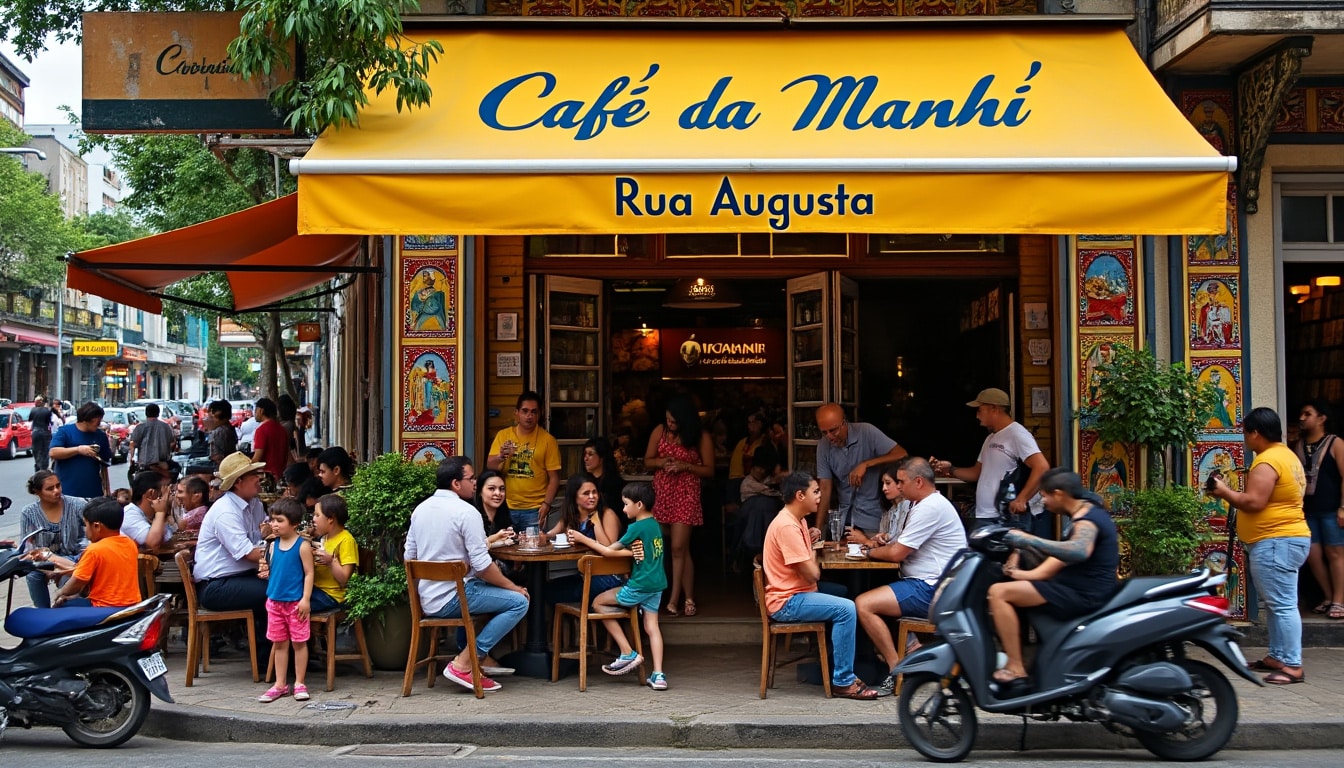
Architectural Diversity: Modernity Meets Tradition
The cityscape of São Paulo presents a peculiar blend of architectural styles. Among the concrete jungle and skyscrapers that punctuate the skyline, one can find historic buildings that narrate tales of yesteryears. The city is a living gallery where modernity intermarries with colonial-era structures, illustrating its transformation over time. This is not merely a facet of aesthetics; it’s reflective of the complex socio-historical layers that comprise the city’s narrative.
Notable Structures:
- 🏛️ São Paulo Museum of Art: A prime example of modern Brazilian architecture.
- 🏙️ Edifício Copan: Showcases São Paulo’s mid-century modernism.
- 🏢 Instituto Butantan: Where science meets history.
Such architectural variety serves a broader societal function; these structures act as spaces that foster community while also acting as reminisces of a time when São Paulo was merely a burgeoning metro seeking its identity amidst political and economic changes.
Sao Paulo’s Housing Crisis and Social Disparities
Behind the gleaming skyscrapers and thriving business districts, São Paulo confronts a daunting housing crisis that pervades many of its districts. The Movimento Sem Teto, translating to the Roofless Movement, highlights the urgency and scope of housing insufficiencies where thousands face eviction or endure overcrowded living conditions. These challenges are not just statistics; they manifest as everyday struggles for countless Paulistanos who battle against economic inequities.
The social landscape is fraught with disparities that span across income, access to services, and living conditions, forming a complex web of social dynamisms. As one navigates through different neighborhoods, the stark contrast in architecture and infrastructure tells stories of inequality. The wealthy enjoy high-rise apartments with exclusive views, while those on the fringes settle in favelas, where amenities are scarce, and risks are manifold.
Factors Contributing to the Housing Crisis:
- 🏚️ Overpopulation and rampant migration to urban areas.
- 💧 Limited housing developments coupled with unaffordable real estate prices.
- ⚠️ Geographical challenges exacerbated by informal settlements in risk-prone areas.
Environmental challenges such as deforestation and land misuse further compound these issues, pushing marginalized communities into areas with poor living conditions. These systemic challenges necessitate a more inclusive approach to urban planning, potentially guided by organizations and policies like MaisMedicos and local initiatives led by institutions such as Instituto Butantan that seek to ameliorate some public health concerns aggravated by these housing issues.
Impact of Social Inequality on Urban Development
The dynamic between social inequality and urban development creates a complex narrative within São Paulo. Areas like Paraisópolis, known ironically as Paradise City, illustrate the dual nature of development: progress on one hand and neglect on the other. As the government strives to upgrade slums, initiatives like Civico and Banco Itaú foster community engagement and development. Yet, in many regions, the glacial pace of socio-economic advancement is apparent, revealing a tale of two cities grappling with disparate realities.
While initiatives exist to uplift these marginalized areas, it remains clear that targeted efforts to bridge the socio-economic chasm hold the key to unlocking broader opportunities for all of São Paulo’s inhabitants. It is in areas like these that efforts from both the public and private sectors may yield the greatest impact, driving towards a more equitable urban experience for all. 🌆
Economic Dynamics and Entrepreneurial Ventures
As a beacon of economic vitality, São Paulo remains the beating heart of Brazil’s economy, a status cemented by its position as Latin America’s largest city. With an economy largely fueled by the service and industrial sectors, São Paulo also plays host to global giants and a myriad of local enterprises alike. Vibrant business districts and flourishing small businesses showcase the city’s entrepreneurial spirit, a crucial driver of its economic resilience. 💼
This economic vibrancy, however, reveals a dual-edged sword when examining the socio-economic dichotomies within the city. While global firms establish major outposts—such as Amaro setting fashion e-commerce benchmarks—local startups vie for a slice of the economic pie. However, this zeal for business fosters a dynamic social fabric, where innovation becomes a tool for empowerment.
Key Economic Drivers:
- 💼 Dominance of the tertiary sector led by services and commerce.
- 🚜 Contribution from agriculture and related industries due to São Paulo’s strategic geographic position.
- 🚀 A booming tech scene with emerging startups and established conglomerates.
Moreover, institutions like Banco Itaú and initiatives promoting business literacy and financial inclusion play a significant role in bolstering local economies. Economic policies and platforms that encourage small-scale entrepreneurship are pivotal in providing a pathway towards reducing inequality. In this sphere, global marketplaces and local ingenuity converge, reflecting São Paulo’s position as a crucible of economic potential.
Entrepreneurship as a Catalyst for Social Change
Entrepreneurship in São Paulo extends beyond transactional ventures; it stands as a vital link in driving socio-economic change. Initiatives and educational programs that foster business skills, often supported by platforms like Vivo Rio, have gained momentum, providing opportunities for marginalized communities to integrate into the economic fabric of the city.
Experiential Anecdotes:
- 🌱 Programs enabling women from favelas to start small businesses.
- 📱 Tech incubators mentoring budding startups from varied socio-economic backgrounds.
- 📚 Education drives aligned with corporate social responsibility goals.
Through these engagements, business becomes not just a means of livelihood but also a catalyst for bridge-building across the stark socio-economic divides present in the city. Innovation and entrepreneurship, therefore, emerge as tools of empowerment, nurturing community growth amidst São Paulo’s vibrant economic tapestry. 🔗
Cultural Vibrancy and Social Movements
Amidst its sprawling urban landscape, São Paulo thrives as a cultural powerhouse, juxtaposing tradition with innovation. The city’s identity is often defined by a vibrant arts scene and its pulsating beats that echo through events like São Paulo Fashion Week. Here, creativity finds its fullest expression, transcending cultural barriers and uniting diverse communities under a single artistic banner. 🎨
However, São Paulo is not just a cultural center; it also serves as the backdrop for numerous social movements. The Movimento Sem Teto, for example, signifies a fight for housing rights that echoes through urban sprawls, reflecting the collective efforts to reclaim dignity in living conditions. These movements not only spotlight local issues but also attract global attention, embodying the spirit of activism and community engagement that reverberates across borders.
Pivotal Cultural Elements:
- 🎭 Thriving theater scene host to traditional and contemporary productions.
- 🎶 Diverse music genres reflecting the city’s multicultural backdrop.
- 🏺 Art galleries and museums such as the São Paulo Museum of Art.
In celebrating these cultural aspects, institutions like the Instituto Butantan push the boundaries of São Paulo’s artistic narrative, intertwining science and culture. The arts become a platform not just for exhibition but for engagement, serving as a fulcrum for discourse on social issues. The city’s cultural spaces, thus, transform into arenas where expressions of identity and calls for social equity intertwine, ushering in narratives of change. 🎭
Role of Social Movements in Shaping Cultural Identity
The interrelation of cultural veneration and social movements in São Paulo contributes significantly to the city’s evolving identity. Activism, often intertwined with cultural initiatives, amplifies voices that call for equity and inclusion. The convergence of cultural events with social advocacy presents a compelling narrative of São Paulo as a city continually redefining itself through its dynamic populace.
This dynamic offers a fertile ground for dialogue and action, allowing social movements to resonate with broader audiences, thereby advocating for sustainable change across societal structures. In São Paulo, the rhythm of samba beats not just in music halls but in the streets, epitomizing cultural vitality and social consciousness united in a progressive dance towards a more inclusive urban identity. 💬
A Statistical Snapshot of São Paulo’s Social Landscape
For a clearer perspective on São Paulo’s intricate social landscape, a look at the numbers provides an unvarnished glimpse into the city’s demographic and socio-economic distribution. These metrics reflect a city of immense diversity yet significant disparity, one that acts as a focal point of Brazil’s broader social issues in microcosm.
| Category 📊 | Details |
|---|---|
| Population Density 📈 | Approx. 22.6 million in 2023 |
| Housing Deficit 🏠 | 52,226 homeless individuals |
| Language Diversity 🗣️ | 150+ languages spoken daily |
| Poverty Rate 📉 | 19% of residents live below the poverty line |
| Crime and Safety Risk ⚠️ | High rates of violent crime and homicides |
The data paints São Paulo as a city grappling with multi-faceted challenges yet rich in potential through its cultural fabric and vibrant economic activities. These elements highlight the resilience at play within the city’s community networks, as they strive for socio-economic balance amidst the pressures of urbanization. 📈
Challenges and Opportunities in São Paulo’s Social Fabric
The statistical landscape of São Paulo suggests both challenges and opportunities that shape its socio-economic dynamics. High population density magnifies the need for comprehensive urban planning and resource management, while the alarming poverty rates underscore the necessity for innovative social strategies that can pave the way for widespread economic empowerment.
Efforts to elevate the livelihoods of São Paulo’s diverse communities require holistic approaches that bridge gaps between cultural identity, economic viability, and social equity. As the city evolves, these dimensions offer spaces for progress, inviting stakeholders across sectors to collaborate in shaping a São Paulo that thrives on inclusivity and opportunity for all its residents, irrespective of their place within this sprawling metropolis.
FAQ Section
In this section, we address some of the common questions about São Paulo’s diverse and complex landscape:
1. Is São Paulo a good place for tourists?
Yes, São Paulo offers a rich cultural experience with its museums, theaters, and diverse neighborhoods. However, tourists are advised to be aware of safety concerns and to plan visits to ensure a secure and enjoyable stay.
2. What are some must-see events in São Paulo?
The Sao Paulo Fashion Week, various music festivals, and cultural expos such as those at the São Paulo Museum of Art are notable events that offer glimpses into the city’s vibrant cultural scene.
3. How does São Paulo address environmental concerns?
São Paulo has initiatives focused on increasing green spaces, better waste management, and sustainable urban development to tackle pollution and other environmental issues.
4. Are there safe areas to stay in São Paulo?
Yes, neighborhoods like Jardins and Vila Madalena are often recommended for their safety and access to cultural and gastronomic experiences.
5. How can travelers navigate São Paulo effectively?
Using taxis or rideshare services is often advised for security and comfort, while the metro system offers a reliable way to navigate the city’s major attractions.
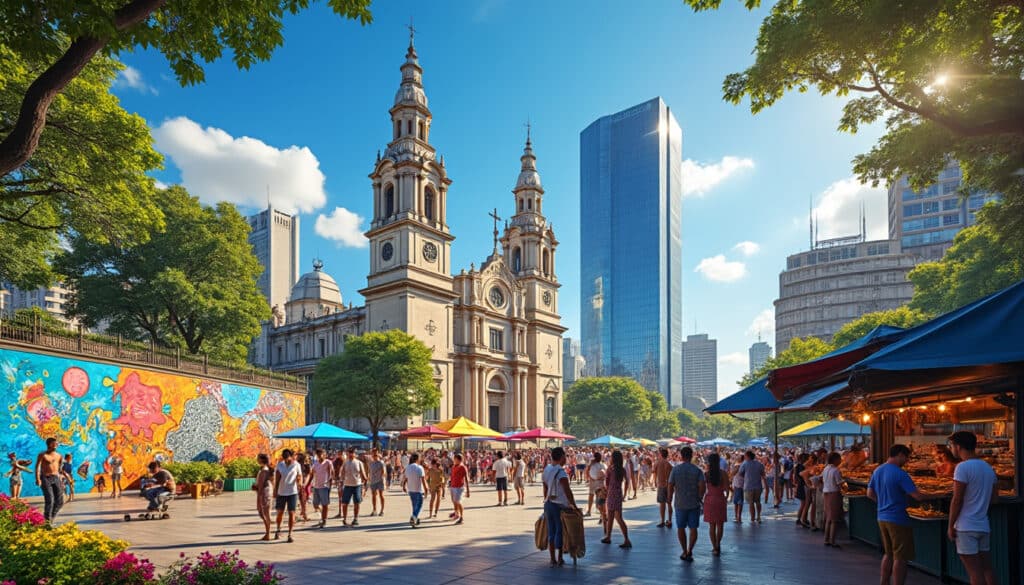
Fun Facts & Curiosities About Sao Paulo
Explore the vibrant landscape of São Paulo, a city teeming with hidden stories, cultural milestones, and urban legends. From its unexpected climate events to its pivotal role in the art world, São Paulo exudes a mix of history and modernity…

Architecture and urban features of Sao Paulo
São Paulo, a sprawling metropolis in Brazil, is a fascinating confluence of modernist innovation and cultural vibrancy. Founded on the riches of coffee plantations, the city swiftly evolved into a cosmopolitan hub, attracting architectural visionaries who contributed to its remarkable…

São Paulo, with its sprawling urban landscape and effervescent energy, is a city that pulsates with the rhythm of life. With a population surpassing 12 million people, it’s known for being a melting pot of cultures, rich history, and dynamic…
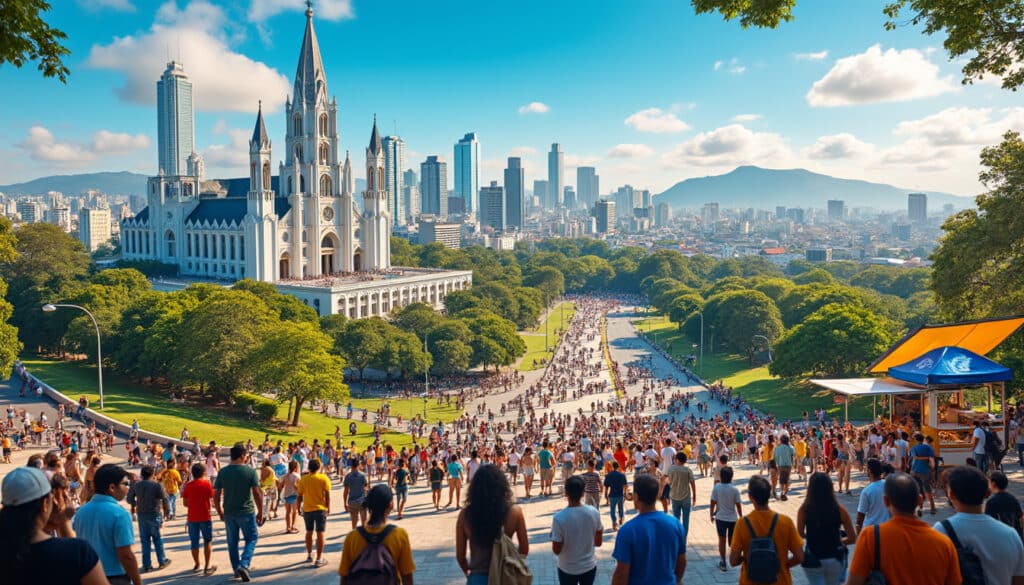
Demographics and geography of Sao Paulo
São Paulo, the vibrant heart of Brazil, is not merely a bustling economic powerhouse but a fascinating mosaic of geographical wonders and diverse demographics. From the rolling plains of its inland plateau to its rich coastal ecosystems, São Paulo forms…

Holidays and celebrations in Sao Paulo
São Paulo, the bustling metropolis of Brazil, is renowned for its vibrant culture and dynamic celebrations. Throughout the year, the city buzzes with energy from a myriad of events and festivals that highlight its diverse cultural heritage and communal spirit.…

Language and spelling of Sao Paulo
São Paulo, Brazil’s largest and most bustling metropolis, serves as a vibrant tapestry of language and culture. Nestled in the heart of the nation, this city is a linguistic conundrum, reflecting Brazil’s diverse heritage through its unique spellings and pronunciations.…

Local tips for tourists in Sao Paulo
São Paulo, a vibrant and sprawling metropolis in Brazil, is an intriguing destination for travelers seeking cultural diversity, culinary delights, and architectural marvels. Known for its pulsating energy and eclectic neighborhoods, the city offers a plethora of experiences waiting to…
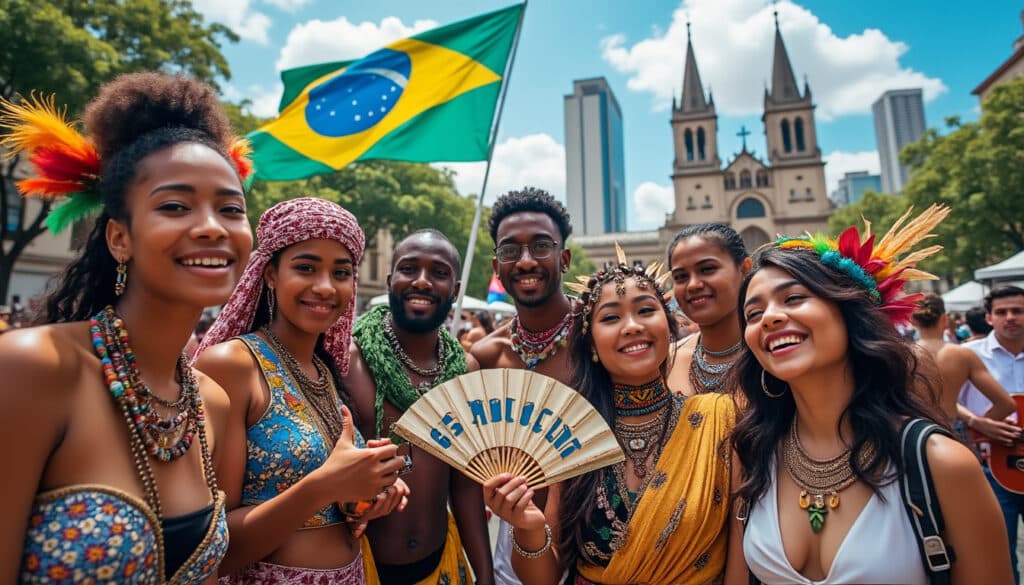
Names, flags, and identity of Sao Paulo
With a rich tapestry of cultural influences, São Paulo stands as a dynamic symbol of Brazil’s vibrant history and contemporary diversity. The names and flags associated with this colossal city intertwine both the past and the present, reflecting the multitude…

Reputation and identity of Sao Paulo
Boasting a cosmopolitan charm and a thriving cultural landscape, São Paulo stands as Brazil’s busiest metropolis. Its identity and reputation have been shaped by centuries of cultural, economic, and intellectual development. From its vibrant festivals and diverse cuisine to its…
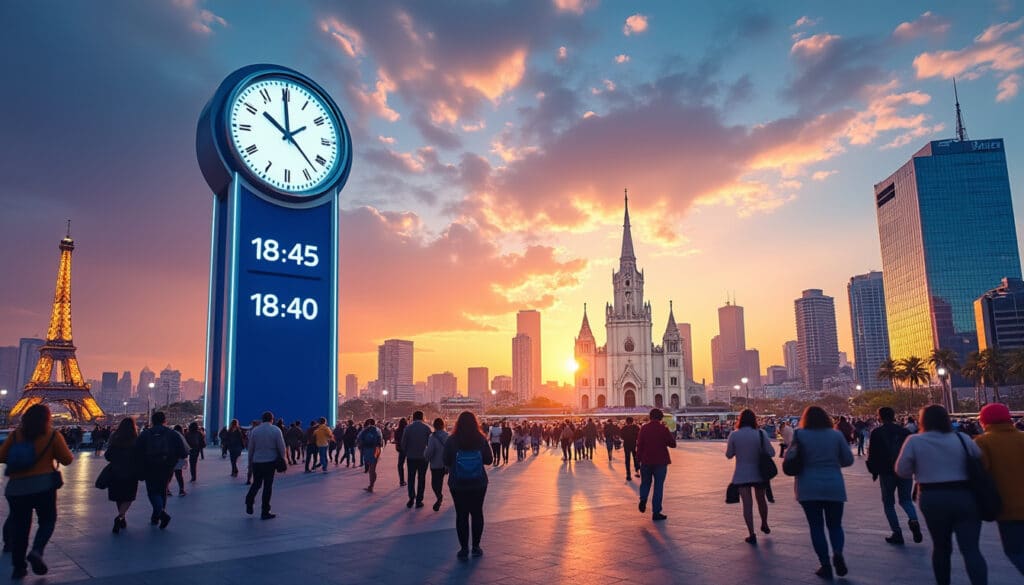
Time and time zone in Sao Paulo
✨ Amidst the vibrant chaos of São Paulo lies a fascinating aspect that ensures the city runs smoothly: its time zone. This bustling metropolis is known for its electrifying urban culture, pulsating nightlife, and economic significance. However, understanding the time…
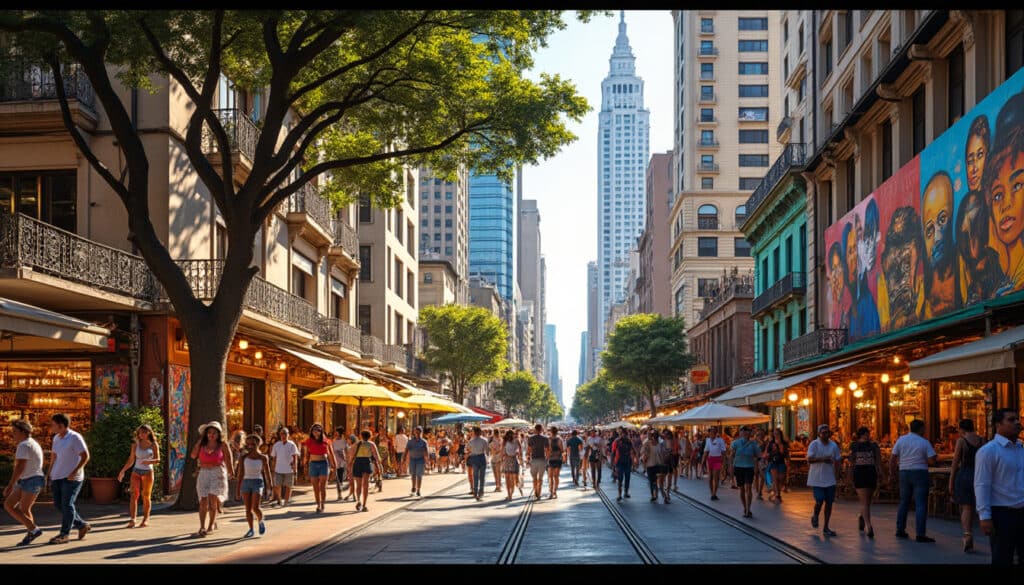
What does Sao Paulo look, smell, feel like?
São Paulo, with its towering skyscrapers, bustling markets, and a mix of graffiti-covered streets, is a cacophony of sensory experiences. This sprawling metropolis thrives with vibrant energy, echoing the diverse cultures that have shaped its identity over the years. It’s…



